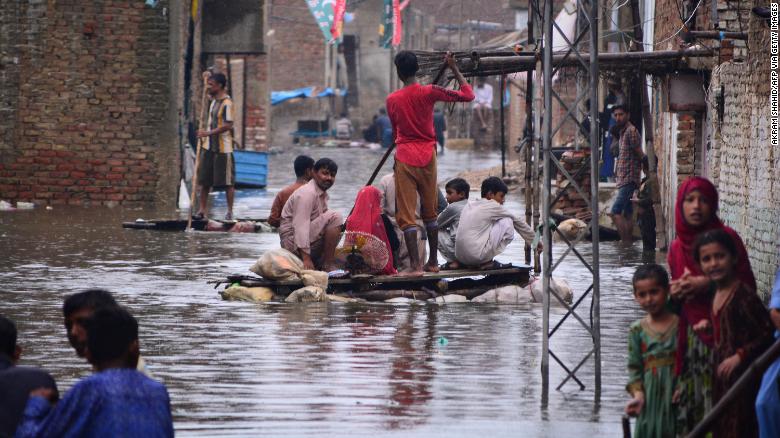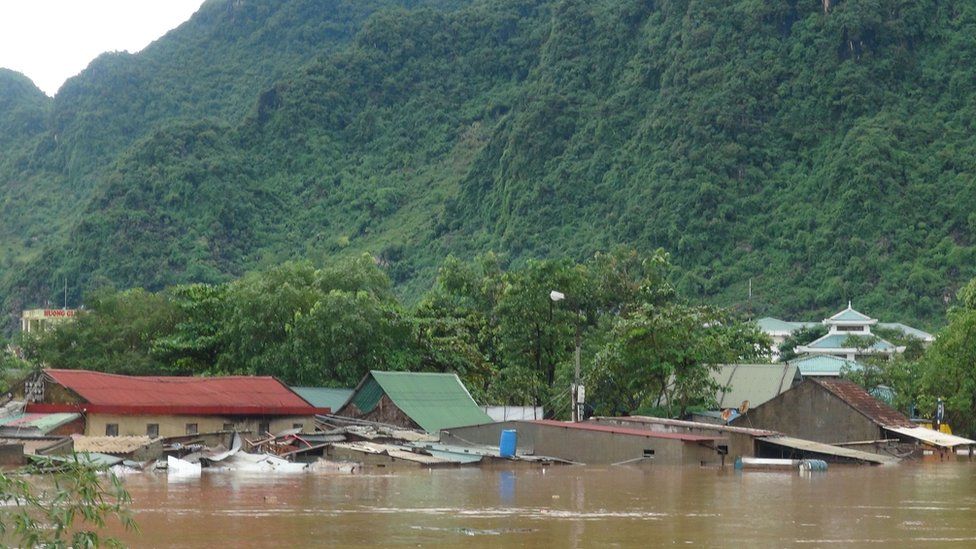Disasters of flood in Pakistan.
A flood is a natural disaster that causes massive destruction by over the flowing of water. Floods are common in Pakistan and affect Sindh and Punjab the most. The monsoon season brings a lot of heavy rainfall that increases the water level of the rivers of Sindh and Punjab and river basins sink into the water. When the floods are extensive, the water rushes, into the heart of cities and villages. Floods are mostly sudden and unexpected. Another reason for floods is when dams break down or because of the melting of glaciers.
The quantity of damaged and destroyed homes in Pakistan has tripled for the reason that closing Weekly regional Humanitarian picture, with around 950,000 houses impacted as of 27 August. At the province level, seeing that closing week the number of damaged/destroyed homes greater than tripled in Sindh (to over 807,000 homes) and more than doubled in Balochistan (to nearly 61,500 houses) and Khyber Pakhtunkhwa (to over 33,200 houses). In Punjab, more than 46, three hundred houses have been damaged/destroyed, a few 18,500 extra than per week earlier. A Floods Response Plan has been evolved to complement the wider authorities' response and aims to resource some five.2 million flood-affected human beings for the subsequent six months. 8 greater districts have been declared ‘calamity hit’ by the government of Pakistan, bringing the total to 80 districts. Over 1.1 million houses have now been broken or destroyed. Some 1,600 km of roads were damaged or destroyed in Khyber Pakhtunkhwa in the last week. The intense weather has endured taking a right away toll on human lives, with greater than 1200 human beings stated to have died, consisting of 244 women, 526 men, and 416 kids. During the last 24 hours, 24 humans have died and 115 had been injured following monsoon rains that continue to affect most of Pakistan. In line with the countrywide disaster control Authority (NDMA), as of 4 September, more than 1300 people have died, and extra than 12,700 were injured. Further, almost 632,000 people were evacuated, and extra than 33 million were affected, the maximum of them in Sindh and Balochistan Province.

What are the effects of a Flood?
Floods damage living conditions and it takes a lot of time to recover from this disaster. It takes away the homes of many poor and leaves people in misery, they are forced to live under the open sky. The shortage of clean water and food takes away the lives of many. The people have to face hunger and starvation. The other major problem is the spreading of disease. Infrastructure damage causes transportation problems. people get stuck in their places until the rescue team arrives through helicopters or boats. The means of communication are broken off. People face power cuts due to the danger of electrocution. The distress of the domestic animals becomes all the more intense.
As the general public is properly conscious, the instant influences of flooding encompass a lack of human lifestyles, damage to belongings, destruction of crops, lack of cattle, and deterioration of fitness conditions because of waterborne illnesses.
Floods additionally regularly damage energy transmission and on occasion energy era, which then has knock-on outcomes caused by the lack of strength. This includes a lack of drinking water treatment and water delivery, which may result in loss of ingesting water or excessive water infection. It is able to additionally cause the loss of sewage disposal facilities. Lack of clean water combined with human sewage in flood waters increases the threat of waterborne sicknesses, which could include typhoid, giardia, cryptosporidium, cholera, and many different illnesses depending upon the vicinity of the flood.
Harm to roads and delivery infrastructure may make it hard to mobilize aid to the ones affected or to provide emergency health treatment.
Flood waters normally inundate farm land, making the land unworkable and preventing plants from being planted or harvested, which could cause shortages of meals each for humans and cattle. Whole harvests for a rustic may be lost in excessive flood circumstances. A few tree species might not live to tell the tale of prolonged flooding of their root structures.
What are the consequences of a flood?
Floods affect both people and groups and have social, monetary, and environmental results. The consequences of floods, each bad and advantageous, vary significantly relying on the vicinity and quantity of flooding, and the vulnerability and value of the natural and constructed environments they have an effect on.
The effects of floods, both poor and nice, range significantly depending on their area, duration, depth, and velocity, in addition to the vulnerability and value of the affected natural and built environments. Floods impact each individual and community featuring social, monetary, and environmental effects.
The environmental blessings of flooding also can help the economic system through matters such as elevated fish production, recharge of groundwater assets, and upkeep of recreational environments.
Regions that have been exceptionally changed via human activity generally tend to suffer more deleterious results from flooding. Floods have a tendency to similarly degrade already degraded structures. Elimination of vegetation in and around rivers, increased channel size, dams, levee financial institution and catchment clearing all paintings to degrade the hill-slopes, rivers, and floodplains, and growth the erosion and switch of both sediment and vitamins.
While biking of sediments and nutrients is critical to a wholesome gadget, too much sediment and nutrient coming into a waterway have terrible impacts on downstream water nice. Other poor effects include loss of habitat, dispersal of weed species, the release of pollutants, lower fish manufacturing, loss of wetlands function, and lack of leisure areas.
Lots of our coastal assets, including fish and different varieties of marine production, are depending on the vitamins supplied from the land in the course of floods. The bad results of floodwaters on coastal marine environments are particularly because of the advent of extra sediment and vitamins, and pollutants along with chemical substances, heavy metals, and particles. These can degrade aquatic habitats, decrease water high-quality, lessen coastal production, and contaminate coastal meal resources.
The government and citizens must work together to formulate ways to prevent floods. Proper awareness must be spread about the steps to take when a flood occurs. Further, there should be an efficient system for storing the excessive water due to rain. Plantation should be done in and around the river banks.




You must be logged in to post a comment.